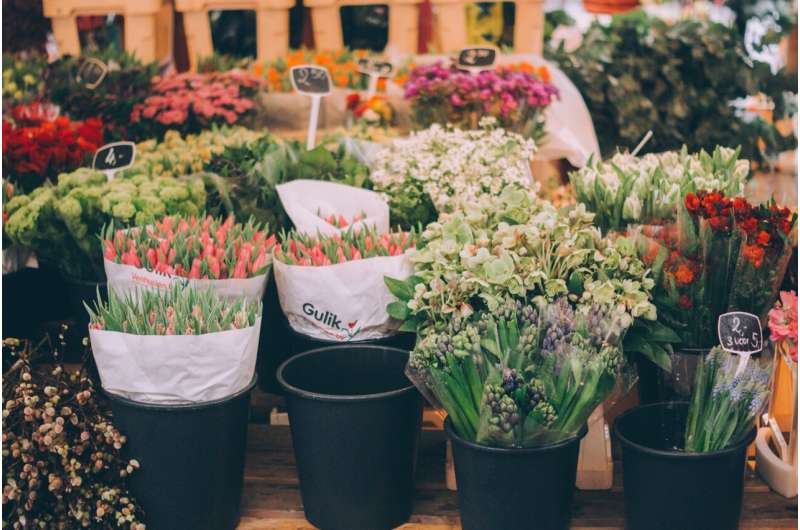This article has been reviewed according to Science X's editorial process and policies. Editors have highlighted the following attributes while ensuring the content's credibility:
fact-checked
trusted source
proofread
Where have all the flowers gone? Miami as import hub for flowers in the US

In the questioning words of the 1955 Pete Seeger song: "Where have all the flowers gone? Long time passing." Well, it seems Miami is where they've all gone and it's not taking them so long, after all.
Research in the International Journal of Teaching and Case Studies has shown how Miami International Airport (MIA) blossomed into the main entry point for 90% of fresh-cut flowers imported into the U.S. The seed of the study used the Theory of Constraints (TOC) to analyze the way in which the airport optimized its operations to handle perishable cut flowers efficiently.
The work by Janaina Siegler of the Lacy School of Business at Butler University in Indianapolis, Indiana, shows that crucial to its growth was addressing the need for a robust cold chain infrastructure given the highly perishable nature of cut flowers. Temperature control during transportation and storage is imperative and so MIA streamlined the unloading and storage in temperature-controlled warehouses that could cope with the hothouse that is the city of Miami.
In addition to the climatic constraints, MIA also had to effectively manage the customs process. The management realized that customs inspections at other U.S. airports could be a significant bottleneck in the processing of goods and such delays could easily lead to floral droop. MIA thus pre-positioned flowers in its cold warehouses and so made customs inspections more efficient and cost-effective by reducing the number of ailing blooms. The airport thus was able to outperform many other airports in this regard.
Of course, the geographical position of MIA in Florida and its proximity to Latin America plays a significant role in its success, not least because of shared language and cultural factors. This allowed cargo aircraft loaded with colorful blooms to be efficiently transported from Bogota, Colombia, for instance, and for those same airplanes to return with products destined for southern countries. MIA thus fertilized a symbiotic relationship, which added mutual economic value to the two-way supply and demand chains.
The work provides invaluable insights into how strategic decisions and optimization of constraints can shape supply chains. The U.S. cut-flower industry sustains more than 200,000 jobs across various sectors, including importers, distributors, wholesalers, retailers, and the florists themselves. Those insights could help researchers, policymakers, and various stakeholders better understand the dynamics behind MIA's role in this sector and so help improve future supply chain strategies and economic decisions. It might also help improve supply chains elsewhere in other import and export sectors.
More information: Janaina Siegler, How Miami became the gateway for flowers in the USA, International Journal of Teaching and Case Studies (2020). DOI: 10.1504/IJTCS.2020.111136
Provided by Inderscience




















